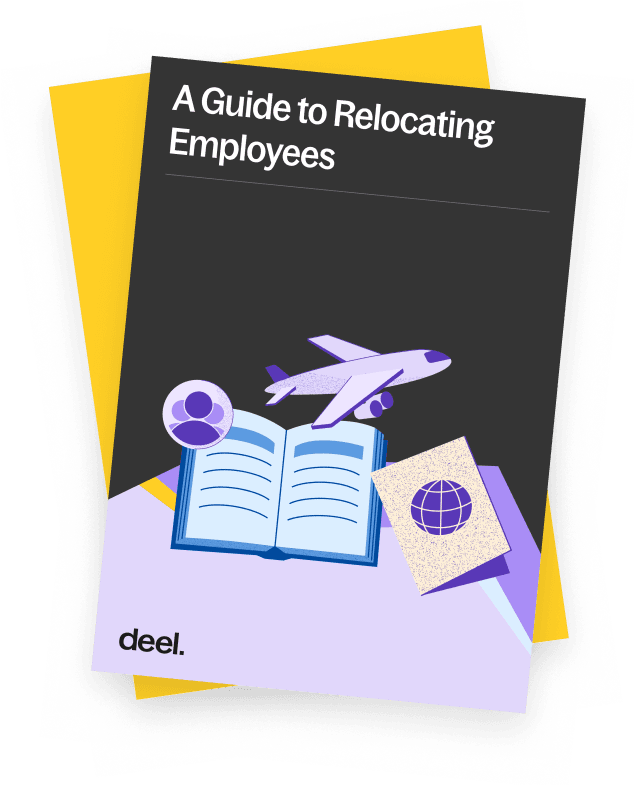Remote Work Glossary
- Results for "undefined"
Table of Contents
Why do companies transfer employees?
Nine types of employee transfer
How to transfer a staff member
How to create an employee transfer policy
What is an employee transfer
An employee transfer is the company's process of moving an employee to a different department or location, often for career development, operational needs, or strategic realignment.
- Purpose of employee transfers: Transfers within a company are primarily done to meet changing business needs, provide employees with growth opportunities, fill vacancies, balance workloads, and improve team dynamics.
- Types of employee transfers: There are various transfer types, including department, location, role, replacement, versatility, shift, promotion, remedial, and production transfers, each serving different organizational and employee needs.
- **Transfer process: **The transfer process involves discussions between managers, planning with HR, and creating a detailed transfer plan that addresses the new job duties, training, and timeline, with the employee being actively involved in the process.
- Employee transfer policy: An effective transfer policy should outline the types of transfers, eligibility criteria, request process, timeline, and support for the employee, ensuring transparency, fairness, and alignment with organizational goals.
Why do companies transfer employees?
There are several reasons why companies may transfer employees. Consider the following examples:
- To meet changing business needs, such as a new project or a shift in focus
- To provide employees with new challenges and opportunities for growth
- To fill vacancies in different departments or locations
- To balance workloads and ensure that each department has the necessary staff
- To develop and retain employees by giving them new experiences and skills
- To improve team dynamics and morale by introducing fresh perspectives and ideas
- To reduce costs, such as by eliminating the need to hire new employees or to provide relocation assistance to new hires
Nine types of employee transfer
There are several types of employee transfers that an organization may use to move employees from one position to another, depending on staff eligibility and the work requirements of the business.
These transfers may be voluntary when an employee requests and agrees to a transfer or an involuntary transfer is initiated by the company.
-
Department transfer: moving an employee from one department to another within the same company
-
Location transfer: moving an employee to a different work location, such as a different branch or office
-
Role transfer: changing an employee's job responsibilities or position within the company
-
Replacement transfer: an employee moves into a new position that has been vacated by another employee.
-
Versatility transfer: designed to provide employees with the opportunity to gain new skills and competencies by moving into different roles within the organization
-
Shift transfer: moving an employee from one shift to another to address staffing needs
-
Promotion transfer: moving an employee to a higher-level position within the company (which comes with increased remuneration)
-
Remedial transfer: moving an employee to a lower-level position within the company, such as demotion, to address performance or conduct issues without serious disciplinary action
-
Production transfer: moving an employee from one production line or work area to another
How to transfer a staff member
The procedure for transferring an employee within an organization typically involves several steps.
First, the employee's current manager and the manager of the new position will discuss the transfer and determine if it is a good fit for both the employee and the team.
If the transfer is approved, the employee's current manager will work with the human resource department to create a transfer plan that outlines the details of the move, such as the new job duties, any additional training that may be required, and the timeline for the transfer.
The employee will then be notified of the transfer and will have an opportunity to provide input and ask questions.
Once the transfer plan is finalized, the employee will begin their new role and be supported through the transition by their new manager and HR.
It’s also possible for an employee to put in a transfer request from their current position to a different job role. Even so, the movement of an employee depends on the employer’s discretion.
How to create an employee transfer policy
An HR team should create an employee transfer policy for several reasons, such as providing clear guidelines for employees and managers on how to handle transfers within the organization. A policy ensures transfers are fair and consistent and that employees understand the process for requesting a transfer and the criteria they must meet.
A transfer policy can also help reduce confusion and potential conflicts by providing a clear framework. Additionally, a transfer policy can help to support the organization's overall goals and strategies while managing employee relations.
Some key elements to include in an employee transfer policy are:
-
The types of transfers available, such as promotions, lateral moves, and job rotations.
-
The transfer eligibility criteria, such as performance and tenure.
-
The process for requesting a transfer, including any required documentation and approval from the employee's current manager and HR.
-
The timeline for the transfer, including any required training and notice periods.
-
Support provided to the employee during the transfer, such as guidance from HR and the new manager.
Once the policy is written, it should be reviewed by relevant stakeholders, such as HR and legal teams, to ensure that it is clear, fair, and legally compliant. HR teams should then communicate the policy to employees and managers to ensure everyone knows the transfer process and their roles and responsibilities.
Learn how Deel can help with employee transfer to another country through our Visa Mobility services.
